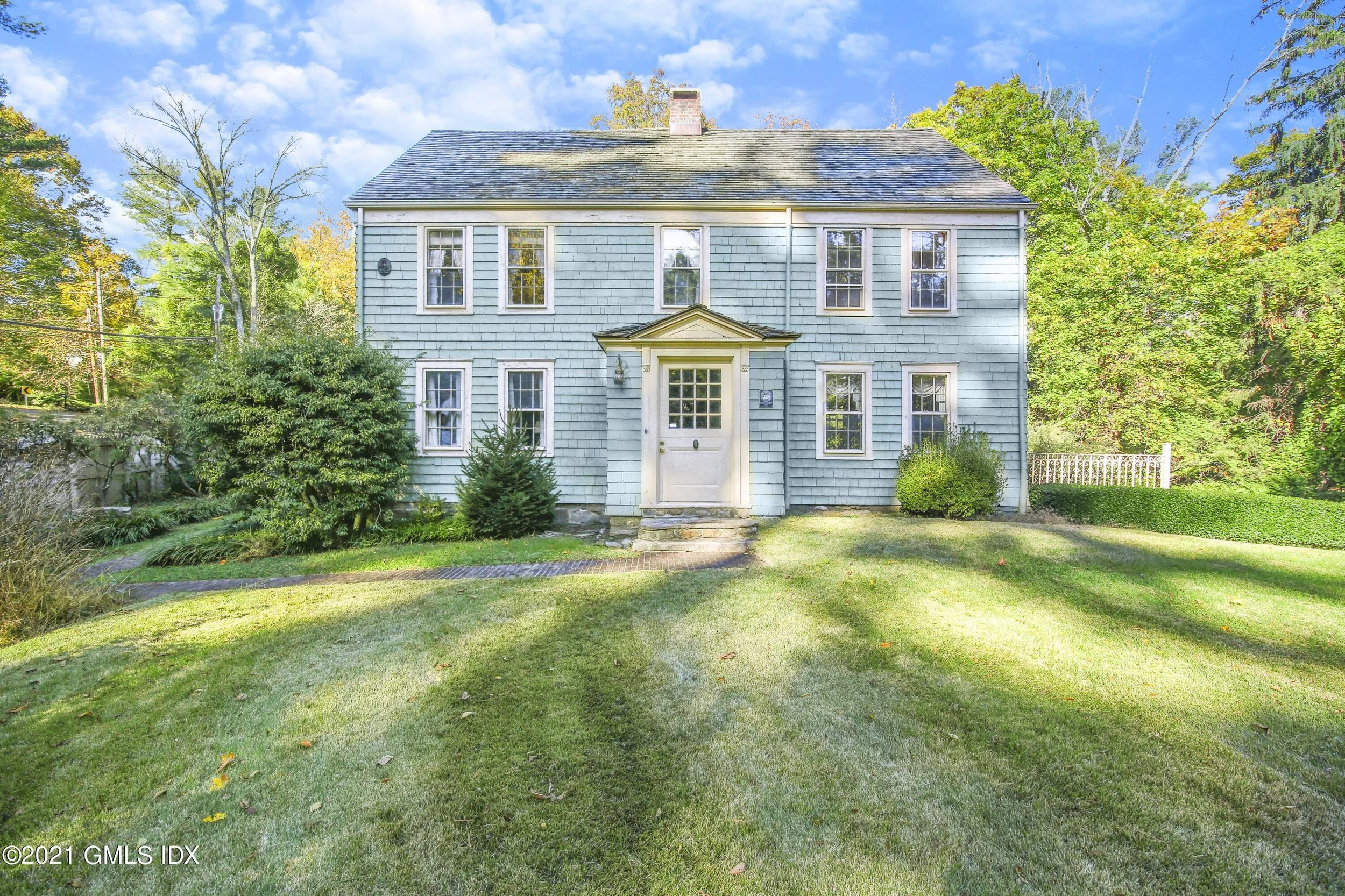More on 117 Dingletown
/I perhaps should have known this but didn’t: This house is owned, and has been owned since 1956, by my fellow realtor, Maggie Larkin. Greenwich Time ran an article on it in 2017. It’s behind their paywall (which can be evaded by disabling Java on your browser, though you didn’t hear that here), but I believe I can excerpt a bit of it:
Robert Marchant
GREENWICH — There’s a photo of the old house at 117 Dingletown Road from 1916, and it’s not a pretty picture.
The house appears to have been picked clean by scavengers and tormented by vandals. The windows are gone, and there’s a gaping hole where the doorway is supposed to be. It looks like a stiff breeze could bring the whole thing down.
Fast-forward 100 years, and the house built around 1750 is inviting, cozy and as sturdy as an oak tree. Lovingly restored by a couple with a deep interest in the colonial period and early American design, the current homeowner was recently honored with the Preservation Leadership Award by the Greenwich Preservation Trust. Sen. Richard Blumenthal also bestowed a certificate of recognition this month.
Maggie Larkin restrains some laughter when she recalls how exacting the restoration process was. She and her husband, the late Sylvester Larkin Jr., hired an architect who specialized in early American homes, Herbert Lawrence Coggins, and he was a taskmaster.
“He was so meticulous,” Larkin recalled. “We could only use timber from southern Connecticut for the paneling.”
The Larkins went on regular excursions to Williamsburg, Va., to scour the antiques markets there for period pieces, and they also went to markets in Connecticut. The lintel for the fireplace came from Guilford.
And I do enjoy this reminder of that early New England practice that forced homeowners to either pay for services that might never be needed or watch the fire company stand idly by while their house burned. “Pay up, or shut up” is a grand idea.
Coggins also insisted on adding another element from early New England, a fire-insurance mark, to the side of the house. The iron plaque depicts a stylized firefighter blowing a horn. Subscribers paid fire-fighting companies in advance for fire protection, and they would receive a fire-mark to attach to their building to let the firefighters know they had paid for the service.
As an aside. Mr. Sylvester Larkin died in 2014 at the age of 90. According to his obituary, he served as a Marine for 2 1/2 years during WW II, “participating in campaigns in the Solomon Islands, New Georgia, Bougainville and Guam”. When I was growing up, most of us had parents who’d fought in the war, but I’m still awed when I see these stories and realize that people like Mr. Larkin, born in 1923, were in their teens or early twenties when they were performing their heroics. It’s easy to forget, or I do, anyway, that our wars are fought by, essentially, kids.


